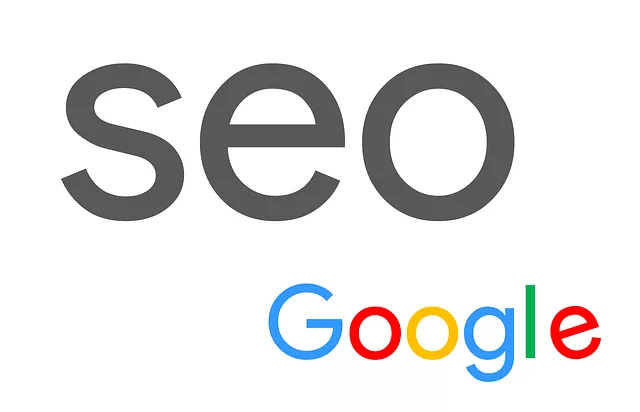By 2025, achieving high SEO rankings demands a strategic shift from keyword optimization to user-focused content creation. Marketers should leverage tools like Google Keyword Planner, SEMrush, Ahrefs, and Moz for deep insights into search trends and user intent. On-page optimization is key, focusing on high-quality content, mobile-friendliness, and clean structure. Technical SEO, including site speed, mobile-friendly design, and security updates, is crucial for better rankings. Leverage high-quality backlinks from authoritative sources and target local keywords for regional market share. Measure keyword ranking success using tools like Google Search Console to track performance and adjust strategies accordingly.
In 2025, understanding keyword ranking dynamics is more crucial than ever for improving SEO rankings. This article navigates the evolving landscape of search engine optimization by exploring key strategies. From dynamic tools for effective keyword research and on-page optimization techniques to the power of high-quality content and technical SEO considerations, we delve into proven methods. Additionally, we scrutinize local SEO tactics for capturing regional market share and provide insights into measuring ranking success. By the end, you’ll be equipped with actionable steps to elevate your online visibility.
Understanding Keyword Ranking Dynamics in 2025

In 2025, understanding keyword ranking dynamics is more critical than ever for businesses aiming to improve their SEO rankings. The search engine algorithms have evolved significantly, becoming increasingly sophisticated in their ability to understand user intent and deliver relevant results. This evolution means that simply optimizing for keywords may no longer be enough; instead, focus should be on creating content that aligns with the natural language queries users type into search bars.
The year 2025 will see a continued emphasis on semantic search, where algorithms interpret the context and meaning behind keywords rather than just matching exact terms. This shift requires marketers to adopt a more nuanced approach, incorporating long-tail keywords, entity recognition, and topic clustering into their strategies. By understanding how users interact with search engines and crafting content that addresses these dynamics, businesses can enhance their visibility, attract organic traffic, and ultimately improve their SEO rankings in the competitive digital landscape of 2025.
Tools for Effective Keyword Research and Analysis

In the digital landscape of 2025, effective keyword research and analysis are paramount for improving SEO rankings. Tools like Google Keyword Planner, SEMrush, Ahrefs, and Moz continue to be game-changers in this domain. These platforms provide valuable insights into search trends, competitor keywords, and user intent, enabling marketers to craft targeted content strategies that resonate with their audience.
With advanced algorithms, these tools help identify long-tail keywords, track keyword performance, and uncover hidden opportunities for content optimization. By leveraging such technology, businesses can enhance their online visibility, attract more organic traffic, and ultimately boost their search engine rankings, ensuring they stay ahead in the ever-evolving digital realm.
Optimizing On-Page Elements for Higher Rankings

To improve SEO rankings in 2025, optimizing on-page elements is more crucial than ever. Search engines like Google are becoming increasingly sophisticated in understanding user intent, and they prioritize content that offers value, is mobile-friendly, and has a clean, organized structure. This means focusing on relevant, high-quality keywords integrated naturally throughout your page’s meta titles, headings, descriptions, and body content.
Effective on-page optimization also involves enhancing user experience through quick loading speeds, responsive design, and intuitive navigation. Utilizing heading tags (H1-H6) to logically organize information, optimizing images with alt text, and ensuring proper internal linking can significantly boost your page’s visibility. Remember, search engines are looking for a seamless, engaging experience for users, and by aligning your on-page tactics with these criteria, you’ll be well on your way to achieving better rankings.
The Role of High-Quality Content in SEO Strategies

In the ever-evolving digital landscape, search engine optimization (SEO) plays a pivotal role in enhancing online visibility and driving organic traffic. High-quality content is a cornerstone strategy to improve SEO rankings in 2025 and beyond. It not only captivates and informs but also encourages user engagement, a key metric that search engines prioritize. By creating comprehensive, valuable, and unique content, websites can establish themselves as authoritative sources, leading to better search engine placement.
SEO experts recognize that content is the lifeblood of online success. Investing in well-researched, thoughtfully crafted articles, blogs, or videos can significantly impact a website’s ability to attract and retain an audience. Search engines like Google are increasingly sophisticated, and they reward sites with consistent, relevant content, ensuring a better user experience. This approach not only boosts rankings but also fosters long-term sustainability in an ever-competitive online environment.
Technical SEO Considerations for Improved Visibility

As keyword ranking strategies evolve in 2025, focusing on Technical SEO becomes increasingly vital for businesses aiming to improve their online visibility. Site speed is a key performance indicator that search engines like Google prioritize heavily. Optimizing website loading times through image compression, leveraging browser caching, and utilizing content delivery networks (CDNs) can enhance user experience and signal to search engines that your site is efficient and worthy of higher rankings.
Furthermore, ensuring your website has an up-to-date, mobile-friendly design is essential. Responsive web design adapts content to various screen sizes, catering to the growing number of mobile users. Search engines reward sites that provide a seamless experience across all devices, so investing in a mobile-optimized site can give you a significant SEO ranking boost. Additionally, regular security updates and implementing HTTPS encryption are crucial for maintaining trust and safety, which search algorithms consider as positive factors when determining website rankings.
Leveraging Backlinks for Boosting Search Engine Rankings

In the ever-evolving landscape of digital marketing, leveraging backlinks remains a powerful strategy to improve SEO rankings in 2025. High-quality backlinks from authoritative websites act as votes of confidence for search engines, signaling that your content is valuable and trustworthy. This positive signal boosts your website’s authority, making it more visible and higher up in search results.
To harness the potential of backlinks effectively, focus on acquiring links from relevant, reputable sources. Guest blogging on industry-leading websites, securing mentions in influential publications, and creating engaging, shareable content can all contribute to a strong backlink profile. Remember, quality trumps quantity; one powerful link from a respected site carries more weight than numerous links from lesser-known or irrelevant pages.
Exploring Local SEO: Capturing Regional Market Share

In 2025, Local SEO is more important than ever for businesses aiming to capture regional market share. As consumers increasingly rely on search engines to find local services and products, optimizing for location-based searches becomes crucial. Improving SEO rankings involves understanding and targeting local keywords relevant to your target audience’s queries. This includes incorporating city names, nearby landmarks, and specific services offered into your website content, meta tags, and backlink profile.
By implementing robust Local SEO strategies, businesses can enhance their visibility in local search results, driving targeted traffic from nearby customers. Leveraging Google Business Profiles, claiming and optimizing local directories, and encouraging customer reviews are also essential tactics to improve SEO rankings locally. Staying current with algorithm updates and adapting your approach accordingly will ensure businesses stay ahead of the curve, maximizing their reach within their regional market.
Measuring and Analyzing Keyword Ranking Success

Measuring and analyzing keyword ranking success is a critical aspect of improving SEO rankings in 2025. Tools like Google Search Console, SEMrush, and Ahrefs provide valuable insights into where your website stands for specific keywords. By tracking these metrics, you can identify high-performing keywords driving organic traffic and pinpoint areas where your content needs enhancement. Regular analysis allows you to adjust strategies, optimize on-page elements, and target new keywords that align with user search intent.
To maximize success, set realistic goals and track progress over time. Key performance indicators (KPIs) such as first-page rankings, click-through rates (CTRs), and average position gains indicate the effectiveness of your SEO efforts. Continuous monitoring ensures you stay ahead of algorithm updates and adapt to evolving search trends, ultimately enhancing your website’s visibility and driving better organic reach.



